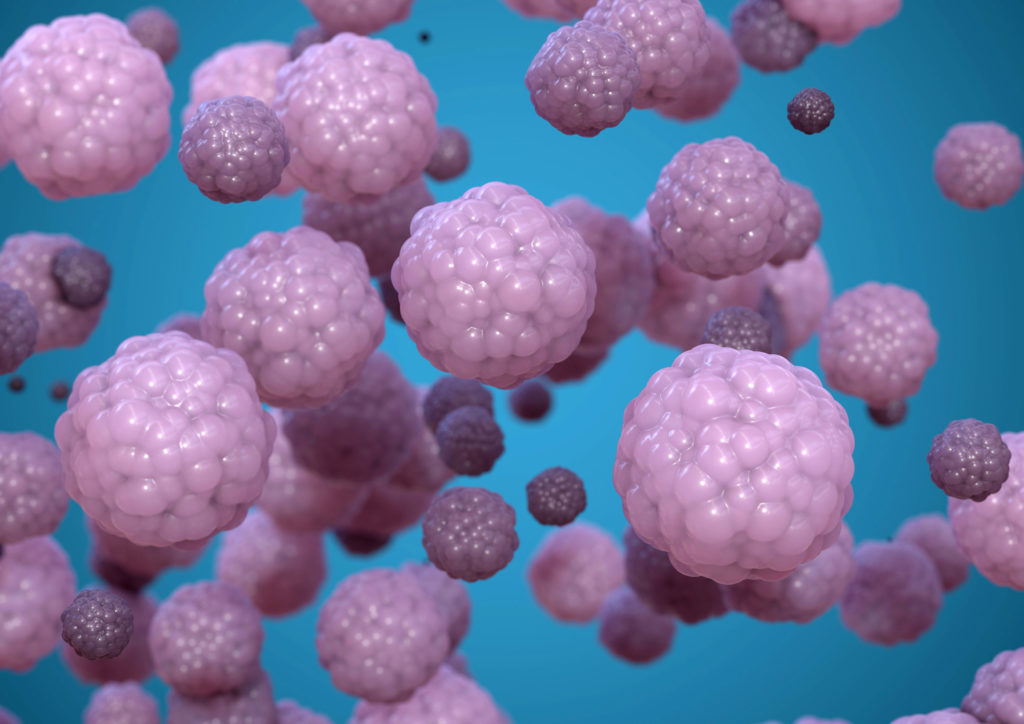
Advantages of Spheroids
In the past decade, there has been a sharp rise in studies using spheroids as cell models for basic research and drug discovery. Spheroids are self-organized aggregation of cells that form a spherical mass, and they have become widely popular because they are much more physiologically relevant compared to flat 2D cell cultures.
In spheroids, the inner cells have less access to nutrients and oxygen compared to the outer layer, forming a natural gradient. As a result, metabolite concentration and cellular state such as proliferation and differentiation, can be very different at the periphery compared to the inner core. This phenomenon, known as “heterogeneity”, makes 3D tumor spheroids much more representative of actual tumors in the human body.
Challenges in Spheroid Research
The use of tumor spheroids as models has accelerated cancer research, providing valuable data on cancer biology and drug screening. However, spheroid data is often difficult to reproduce because there is no one-size-fits-all method for setting up spheroid experiments.
There are many ways to create spheroids, and a variety of cell culture media and cell types to choose from—and each lab uses their own method. Changing just one of these conditions could significantly affect the data, making it hard to reproduce results from one lab to another. What makes this worse is that many published studies don’t even report the details of their method, making it virtually impossible for other researchers to replicate.
MISpheroID: A Spheroid Research Knowledgebase
A group of international researchers led by Ghent University in Belgium is trying to solve this reproducibility issue by creating an open-access knowledgebase called “MISpheroID”—a collection of 3,058 tumor spheroid studies. Each study was analyzed for 98 experimental parameters that provided information about the cell line, culture medium, spheroid size and formation method. Their findings were published in a recent Nature Methods paper.
Using MISpheroID, the researchers revealed the true severity of inconsistent reporting in spheroid studies. Out of 1,333 breast cancer spheroid studies, 10% did not report the culture medium type and 47.5% did not provide the glucose concentration of the medium. In addition, only 23.3% of studies disclosed information about the spheroid size or morphology.
The widespread lack of transparency is concerning because changes in culture media and spheroid size can potentially influence experimental results. But how are results affected and to what extent? To answer this, the researchers tested how changing these different parameters could affect gene expression in various cancer cell lines.
Impact of Spheroid Conditions on Results
In one experiment, the researchers tested spheroids from four common cancer cell lines grown in six types of culture media. All four cell lines showed changes in gene expression patterns in response to culture media type. Different cell lines seem to be affected differently, as two of the cell lines (A549 and SKOV3) showed a much larger variation than the others.
Besides gene expression, cell media type also affected other spheroid metrics such as cell death, ATP content, lactate secretion and glucose uptake. In some cell types, nutrient-poor media conditions correlated with increased cell death and lower ATP content (measured by the CellTiter-Glo 3D Assay). In addition, varying glucose concentrations in cell media largely influenced the ratio of lactate secretion to glucose uptake (L/G) in every cell line tested (measured by the Lactate-Glo™ Assay and Glucose Uptake-Glo™ Assay). This also led to changes in inflammatory and angiogenic protein secretion.
Spheroids are often used as a model to test potential cancer treatments. Could cell media type also affect how spheroids respond to treatment? To answer this, the researchers performed radiotherapy—a common cancer therapy—on five cell lines, each grown in six different culture media types. In four out of five cell lines, the response to radiotherapy was significantly impacted by the culture medium used.
To further validate these results, the authors had seven independent laboratories perform the same experiment: test how six culture medium types affect one spheroid cell line—while keeping all other factors constant. Although there was still variation, the results were largely consistent with previous results.
Advancing Spheroid Research
In conclusion, this study verified the widespread lack of transparency in spheroid studies and that variation in experimental conditions can profoundly influence results. It also provided a recommended “minimum information”—including cell line, culture medium, spheroid size and formation method—that should be disclosed in every spheroid experiment.
Of course, the MISpheroID knowledgebase would be pointless without widespread acceptance and adoption from the spheroid research community. The authors encourage researchers to upload spheroid experiments to https://www.mispheroid.org, where experimental parameters will be recorded. Researchers can also search the knowledgebase for articles using various search parameters.
The main purpose of the MISpheroID knowledgebase is to help improve consistency and reproducibility in spheroid research. If all studies provided the recommended minimum information on spheroid conditions, it could help the community share and reproduce results—which is crucial to further advance the field.
Learn about our Assays and Tools for 3D Cultures to help you monitor cell health, metabolism, gene expression and more!
OR…read additional blogs about tools and methods for working with 3D cell cultures on Promega Connections.
Reference: Peirsman, A. et al. (2021) MISpheroID: a knowledgebase and transparency tool for minimum information in spheroid identity. Nat Methods. 18, 1294–1303.
Latest posts by Johanna Lee (see all)
- Microfluidic Organoids Could Revolutionize Breast Cancer Treatment - March 25, 2025
- Bacteria From Insect Guts Could Help Degrade Plastic - January 28, 2025
- A Diabetes Drug, Metformin, Slows Aging in Male Monkeys - December 19, 2024
